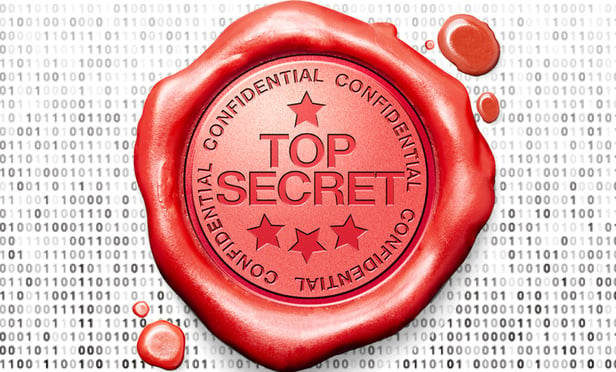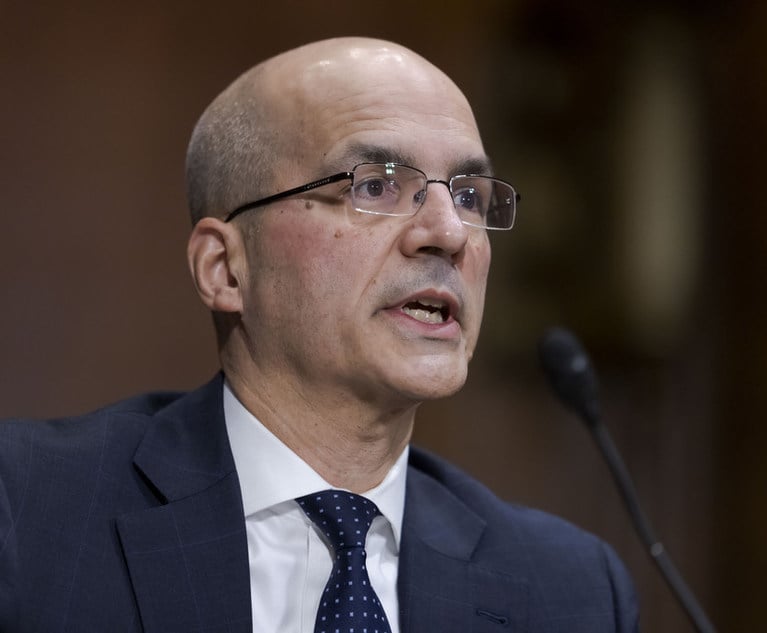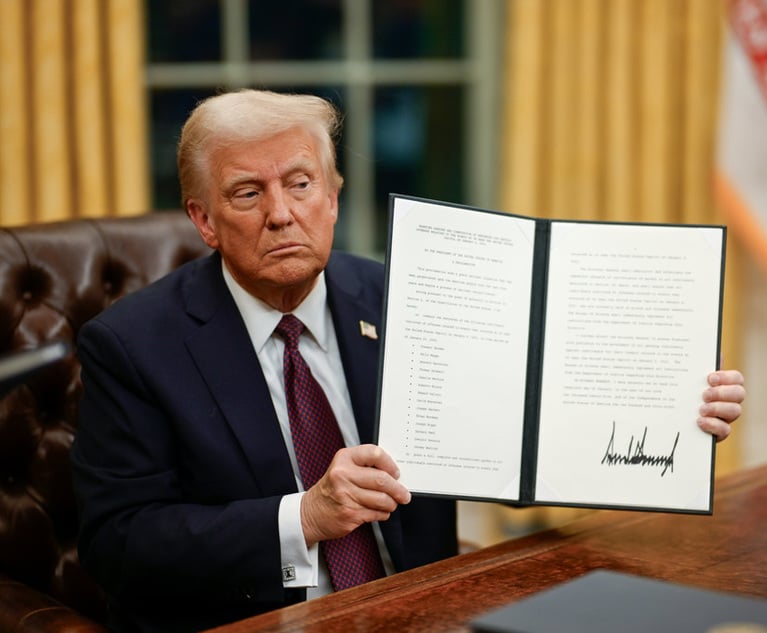Just How Secret Is It? Can Mere Confidential Information Be Legally Protected?
The answer to the question posed by the title of this article is clearly “yes.” But “to what extent?” and “through what means?” are questions with less settled answers.
December 14, 2018 at 02:35 PM
9 minute read
 The answer to the question posed by the title of this article is clearly “yes.” But “to what extent?” and “through what means?” are questions with less settled answers. Recently, New York Commercial Division Justice Shirley Werner Kornreich ruled that there can be no claim under New York law for the misappropriation of information that does not qualify for trade secret protection. Young Adult Inst. v. Corp. Source, 2018 NY Slip Op 30640(U), ¶ 18 (Sup. Ct. N.Y. Co. April 11, 2018). Otherwise, she reasoned, the prerequisites for claiming trade secret misappropriation would have little meaning and the floodgates could open for anticompetitive litigation seeking to prevent the use of information that is within the public domain. The Young Adult ruling, though based on New York common law, is consistent with court decisions in other states applying the preemption provision of the Uniform Trade Secret Act (the UTSA). (New York now stands alone as the only state that has not adopted some variation of the UTSA.)
The answer to the question posed by the title of this article is clearly “yes.” But “to what extent?” and “through what means?” are questions with less settled answers. Recently, New York Commercial Division Justice Shirley Werner Kornreich ruled that there can be no claim under New York law for the misappropriation of information that does not qualify for trade secret protection. Young Adult Inst. v. Corp. Source, 2018 NY Slip Op 30640(U), ¶ 18 (Sup. Ct. N.Y. Co. April 11, 2018). Otherwise, she reasoned, the prerequisites for claiming trade secret misappropriation would have little meaning and the floodgates could open for anticompetitive litigation seeking to prevent the use of information that is within the public domain. The Young Adult ruling, though based on New York common law, is consistent with court decisions in other states applying the preemption provision of the Uniform Trade Secret Act (the UTSA). (New York now stands alone as the only state that has not adopted some variation of the UTSA.)
These cases leave open the tougher questions of whether, to what extent and by what means the law should allow the owner of information that does not rise to the level of a trade secret (“mere confidential information” or “MCI”) to protect that information from use or disclosure by others. Most commonly, many or even most businesses in this country have adopted contracts, policies or procedures that say employees cannot use or disclose information belonging to their employer. These provisions are rarely if ever limited to trade secret information. Rather, they usually prohibit employees from using or disclosing “trade secret, confidential or proprietary information,” with examples or categories that often extend well beyond true trade secrets. The issue, then, is whether someone should be able to protect by contract what cannot be protected by trade secret law. Similarly, to what extent should the owner of MCI be able to protect that information through the assertion of tort claims, such as conversion, breach of fiduciary duty, unfair competition, unjust enrichment and conspiracy?
Clashing Public Policies and Preemption
Neither the UTSA nor the federal trade secret law, the Defend Trade Secrets Act (DTSA), enacted in 2016, protect MCI. They deal only with trade secrets, defined to mean information that (1) is secret and not readily ascertainable, (2) derives value from secrecy and (3) is subject to reasonable efforts to keep it secret.
The DTSA, by its terms, does not preempt or displace any other laws or remedies (18 U.S.C. §1838). The UTSA, however, in a much-litigated “Effect on Other Law” provision, “displaces conflicting tort, restitutionary, and other … State [law] providing civil remedies for misappropriation of a trade secret” (section 7). That section further states that the UTSA does not affect “contractual remedies …, other civil remedies that are not based upon misappropriation of a trade secret or criminal remedies.”
The majority rule is that this preemption provision displaces all alternative tort causes of action for misappropriation of information that does not rise to the level of a statutory trade secret. See Atlantic Med. Specialists v. Gastroenterology Assocs., P.A., 2017 Del. Super. LEXIS 196, at *33-34 (Del. Super. Ct. April 20, 2017). For example, in the high-profile case of Waymo v. Uber, the court ruled that California's UTSA provides the exclusive civil remedy for misappropriation of trade secrets and precluded Waymo's unfair competition claim because it was based on the same nucleus of facts as Waymo's trade secret claim. Waymo v. Uber Techs., 256 F. Supp. 3d 1059, 1062-64 (N.D. Cal. 2017). Thus, the court refused to allow Waymo to use its unfair competition claim as a backstop for any allegedly purloined information that did not qualify for trade secret protection.
Conversely, in Joshua David Mellberg v. Will, 96 F. Supp. 3d 953 (D. Ariz. 2015), the court upheld an unfair competition claim based on the misappropriation of MCI. Courts in the minority rule states essentially apply a plain language approach to statutory construction and reason that, because the preemption provision applies only to “misappropriation of a trade secret,” the UTSA does not displace claims for misappropriation of information that is not statutorily defined as a trade secret. Burbank Grease Servs. v. Sokolowski, 717 N.W.2d 781 (Wis. 2006); see also Atlantic Med., 2017 Del. Super. LEXIS 196, at *34-35.
Courts embracing the majority rule have argued it is no accident that the final draft of the UTSA leaves non-trade secret confidential information out of the statute. Id. at *35-36. The UTSA was promulgated to promote uniformity and predictability by creating clear requirements for trade secret protection. It would subvert that goal, they argue, to allow misappropriation or other tort claims based on the theft of MCI. As one court put it:
If a plaintiff could … recover for misappropriation of non-proprietary information or misappropriation of unguarded proprietary information, the legislative judgment contained in the [Georgia UTSA] – that such information should otherwise flow freely in the public domain—would be subverted. And it would make little sense to go through the rigamarole of proving information was truly a trade secret if a plaintiff could alternatively plead claims with less burdensome requirements of proof.
Diamond Power Int'l v. Davidson, 540 F. 2d 1322, 1345 (N.D. Ga. 2007); see also PHA Lighting Design v. Kosheluk, 2010 U.S. Dist. LEXIS 30752, at *32-39 (N.D. Ga. March 30, 2010).
Contract Claims Based on MCI
Despite the plethora of divergent cases on the subject of preemption, an equally or even more important question, which has received less judicial attention, is the extent to which a claim for breach of contract can be asserted to prevent, or seek redress for, the use or disclosure of MCI. The UTSA's preemption provision is of no help on this issue because it expressly carves out “contractual remedies.” But many of the same policy considerations underlying the majority rule discussed above are also implicated by the too-ready allowance of contract claims for the misappropriation of mere confidential information.
The reason this is so important is that most cases in the trade secret arena involve departing or departed employees, who are very often subject to contracts or policies prohibiting the use or disclosure of their former employer's information. If such claims can be based on MCI, that arguably undermines the goals of uniformity and narrow protection (to safeguard public domain information) advanced by trade secret law. It also creates the potential for abusive, anticompetitive litigation and can negatively impact employee mobility. On the other hand, to promote innovation and safeguard the fruits of that innovation (and hard work), it can certainly be argued that a business should be able to protect information that does not qualify for trade secret protection. We have not found any case anywhere in the country that has gone so far as to say that a breach of contract claim can never be brought for the misappropriation of MCI. However, there are and should be limits.
Let's look at a couple of illustrations. Customer lists are a frequent subject of trade secret litigation. They may be protectable if the customers are not readily identifiable from public sources, if the lists contain other information about the customers (such as the type and quantity of goods purchased and pricing) and if the business takes reasonable steps to keep the lists secret. If a company's lists do not satisfy these requirements, should a former employee still be subject to suit for using the information? Does it make a difference if the former employee physically takes the lists versus just using what he or she remembers? As a second example, let's assume a mid-level engineer has just left Company A to join a competitor. If she had a contract with Company A saying she would not use what she learned at her old job, should Company A be able to stop her from working for the competitor? Should the answer depend on whether Company A's designs and processes rise to the level of a trade secret? Should it matter if she left without taking any of Company A's documents?
Where Should the Lines Be Drawn?
These are not easy questions and, in practice, cases involving trade secrets and related claims often turn on highly fact-sensitive analyses of the evidence. But a few guiding principles can be drawn from legal authorities and common sense. First, it is well established that a contract cannot make information a trade secret just by labeling it as such. See Atlantic Med., 2017 Del. Super. LEXIS 196, at *40. The statutory or common law requirements must be satisfied. A similar approach should be applied to enforcing contracts protecting MCI. The parties' definition of what is confidential should be given some deference but publicly available information cannot be made confidential by contract. See Orthofix v. Hunter, 630 Fed. Appx. 566, 573-74 (6th Cir. 2015). There is real value in preserving open access to what truly is in the public domain.
Second, employees are free to take their general knowledge, skill and experience in a profession or industry with them from one job to another. That cannot be restricted by contract. Id.
Third, when there has been a physical taking of documents or other property, whether in hard copy or digital form, the owner should be able to recover its property and prevent unauthorized use. Conversion and replevin are time-honored claims that address the unlawful possession of someone else's property. A corollary is that, when there has been no physical taking, and the claim is only that the accused party is using what is in his or her head, the courts should be cautious about intervening. See, for example, the federal trade secret law (18 U.S.C. §1836(b)(3)(A)(i)(I)), requiring that injunctions be based on “evidence of threatened misappropriation and not merely on the information the person knows.”
Steven M. Kayman is a partner and the founder and co-head of the non-compete and trade secrets practice group at Proskauer Rose. Brian Kim is a former student in the Trade Secrets class Mr. Kayman teaches as an Adjunct Professor at Brooklyn Law School and is pursuing a career in intellectual property law.
This content has been archived. It is available through our partners, LexisNexis® and Bloomberg Law.
To view this content, please continue to their sites.
Not a Lexis Subscriber?
Subscribe Now
Not a Bloomberg Law Subscriber?
Subscribe Now
NOT FOR REPRINT
© 2025 ALM Global, LLC, All Rights Reserved. Request academic re-use from www.copyright.com. All other uses, submit a request to [email protected]. For more information visit Asset & Logo Licensing.
You Might Like
View All
'A Shock to the System’: Some Government Attorneys Are Forced Out, While Others Weigh Job Options
7 minute read
'Serious Legal Errors'?: Rival League May Appeal Following Dismissal of Soccer Antitrust Case
6 minute read
How Some Elite Law Firms Are Growing Equity Partner Ranks Faster Than Others
4 minute read
Trending Stories
- 1German Court Orders X to Release Data Amid Election Interference Concerns
- 2Litigation Trends to Watch From Law.com Radar: Suits Strike at DEI Policies, 'Meme Coins' and Infractions in Cannabis Labeling
- 3Judge Gets Public Reprimand for Favoring Cops
- 4Investor Sues in New York to Block $175M Bitcoin Merger
- 5Landlord Must Pay Prevailing Tenants' $21K Attorney Fees in Commercial Lease Dispute, Appellate Court Rules
Who Got The Work
J. Brugh Lower of Gibbons has entered an appearance for industrial equipment supplier Devco Corporation in a pending trademark infringement lawsuit. The suit, accusing the defendant of selling knock-off Graco products, was filed Dec. 18 in New Jersey District Court by Rivkin Radler on behalf of Graco Inc. and Graco Minnesota. The case, assigned to U.S. District Judge Zahid N. Quraishi, is 3:24-cv-11294, Graco Inc. et al v. Devco Corporation.
Who Got The Work
Rebecca Maller-Stein and Kent A. Yalowitz of Arnold & Porter Kaye Scholer have entered their appearances for Hanaco Venture Capital and its executives, Lior Prosor and David Frankel, in a pending securities lawsuit. The action, filed on Dec. 24 in New York Southern District Court by Zell, Aron & Co. on behalf of Goldeneye Advisors, accuses the defendants of negligently and fraudulently managing the plaintiff's $1 million investment. The case, assigned to U.S. District Judge Vernon S. Broderick, is 1:24-cv-09918, Goldeneye Advisors, LLC v. Hanaco Venture Capital, Ltd. et al.
Who Got The Work
Attorneys from A&O Shearman has stepped in as defense counsel for Toronto-Dominion Bank and other defendants in a pending securities class action. The suit, filed Dec. 11 in New York Southern District Court by Bleichmar Fonti & Auld, accuses the defendants of concealing the bank's 'pervasive' deficiencies in regards to its compliance with the Bank Secrecy Act and the quality of its anti-money laundering controls. The case, assigned to U.S. District Judge Arun Subramanian, is 1:24-cv-09445, Gonzalez v. The Toronto-Dominion Bank et al.
Who Got The Work
Crown Castle International, a Pennsylvania company providing shared communications infrastructure, has turned to Luke D. Wolf of Gordon Rees Scully Mansukhani to fend off a pending breach-of-contract lawsuit. The court action, filed Nov. 25 in Michigan Eastern District Court by Hooper Hathaway PC on behalf of The Town Residences LLC, accuses Crown Castle of failing to transfer approximately $30,000 in utility payments from T-Mobile in breach of a roof-top lease and assignment agreement. The case, assigned to U.S. District Judge Susan K. Declercq, is 2:24-cv-13131, The Town Residences LLC v. T-Mobile US, Inc. et al.
Who Got The Work
Wilfred P. Coronato and Daniel M. Schwartz of McCarter & English have stepped in as defense counsel to Electrolux Home Products Inc. in a pending product liability lawsuit. The court action, filed Nov. 26 in New York Eastern District Court by Poulos Lopiccolo PC and Nagel Rice LLP on behalf of David Stern, alleges that the defendant's refrigerators’ drawers and shelving repeatedly break and fall apart within months after purchase. The case, assigned to U.S. District Judge Joan M. Azrack, is 2:24-cv-08204, Stern v. Electrolux Home Products, Inc.
Featured Firms
Law Offices of Gary Martin Hays & Associates, P.C.
(470) 294-1674
Law Offices of Mark E. Salomone
(857) 444-6468
Smith & Hassler
(713) 739-1250






